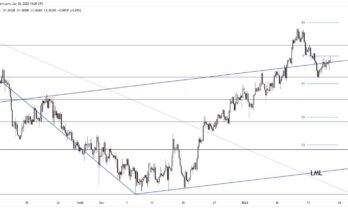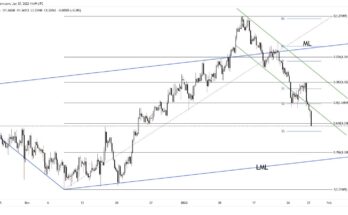Asian markets concluded the second week of 2014 mixed, with the Shanghai Composite down 0.7% while the Hang Seng and Nikkei closed in positive territory, at 22,846 (+ 0.26%) and 15,912 (+0.20%) respectively. The Shanghai Composite was dragged down by Chinese trade data which registered a trade surplus of $25.64 billion, missing consensus of $32.15 billion and China’s exports cooled further in December at 4.3%, against expectations of 4.5%.
Overall, the Shanghai Composite index has been pressured by a weaker Chinese outlook, as illustrated with a deceleration in activity for both the services and manufacturing sectors, inflation that hit a seven month low in December and the recommencement of IPOs after a year of moratorium.
The silver lining in the data set from China was its imports that surged 8.3% on an annualized basis which indicates that domestic demand could remain healthy the first quarter of 2014. China has also announced that it has overtaken the US as the world’s largest trader of goods. The People’s Bank of China (PBOC) cautioned that Chinese exporters will continue to face headwinds in the new year with increased labor costs and a rising yuan. Coupled with inflation missing the central banks’ target of 3.6%, the PBOC will refrain from tightening its monetary policy too quickly to support growth while at the same time implementing reforms that will trim down debt levels and contain credit growth.
Crude oil, at time of writing is up 0.97% to $ 92.63 a barrel, supported by figures stemming from China. For the month of December, China imported record $6.3 M barrels a day.
The euro posted a rebound overnight to trade marginally above the 1.3600 handle after having fallen to a low of $1.3548 on Thursday buoyed by demand for euro zone peripheral bonds. Ireland’s strong performance, attracted 14 billion euros for its 10 year bonds, and certainly sets a benchmark for Greece, Portugal and Cyprus, who are all still under bailout programs and boosts overall appetite for bonds. Yields for Spain and Greece’s 10 year bonds narrowed 10 and 17 basis points respectively.
The single currency was further supported by forecast from the Bank of France where the economy will expand 0.5% in the fourth quarter. As a whole, Eurozone GDP for the third quarter came in line with estimates at 0.1% during the third quarter of 2013 while contracting 0.4% on an annualized basis. In other fundamental data, Spanish and French industrial output was robust, with Spain climbing 2.6% and France 1.3%.
Despite disappointing UK industrial output which was flat in November and construction activity falling 4%, its sharpest monthly decline since June 2012, the pound remained resilient above the 1.6400 level and has since rebounded to trade in the mid 1.6450s. The data suggests that the UK recovery may not be as strong as anticipated and the outlook for the pound remains negative. Support for the pair of GBP/USD is seen at 1.6430, 1.6331 and 1.6240 while upside is found at 1.6498.
Across the Atlantic, the main event for the North American session was non-farm payroll print which saw the US economy add a mere 74,000 jobs, a far cry from the expected 197,000. The unemployment rate, however, improved to 6.7% as the labor participation rate decreased. November figures were revised upward from 203,000 to 241,000. This throws a curve ball to the recent string of positive data that supports the argument that perhaps the US economy is ready for a measured winding back of stimulus by the Federal Reserve.
The loonie’s woes were compounded with domestic employment data which saw the economy lose 45,900 jobs while markets anticipated an addition of 14,600 jobs. The unemployment rate edged up to 7.2% from November’s print of 6.9%. USD/CAD has broken through the 1.0900 handle where a close successful test of 1.0920 could see USD/CAD bring forth 1.0965, followed by 1.1170. On the downside, support is located at 1.0815, 1.0736 and 1.0660.
Written by Cheryl Girling of Cambridge FX,



